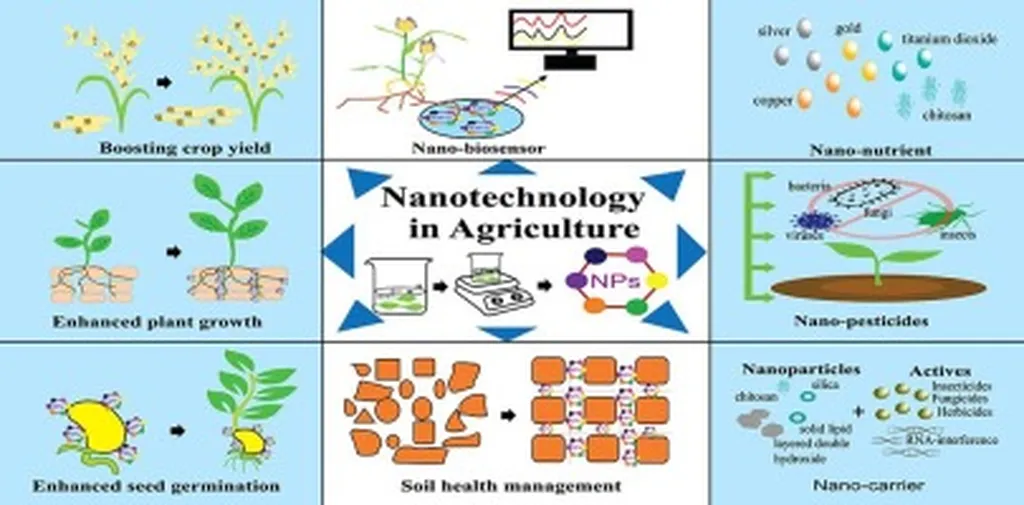In a groundbreaking development that could reshape the agricultural landscape, researchers have unveiled a novel approach to nutrient management that promises to enhance rosemary plant growth and essential oil yield while significantly reducing environmental impact. The study, published in *Industrial Crops and Products*, introduces a simple yet effective mechanical milling strategy that enables the foliar application of nanosized macro- and micro-nutrient particles at considerably lower dosages than conventional methods.
The research, led by Chalasani Danteswari from the School of Life Sciences and School of Engineering Sciences and Technology at the University of Hyderabad, India, addresses a critical challenge in modern agriculture: the high nutrient input required for efficient plant growth and high-quality essential oil (EO) yield. Traditional methods often pose environmental hazards due to excessive nutrient use. The new strategy not only mitigates these risks but also enhances plant growth, bio-fortification, and secondary metabolite content.
“Our approach offers a sustainable alternative to conventional high-nutrient-input agricultural practices,” Danteswari explained. “By using nanosized nutrient particles, we achieve extraordinary plant growth and high-quality EO yield even at much lower nutrient dosages.”
The study demonstrates that even at lower dosages than recommended, there is a significant increase in total plant weight and the content of nitrogen (N), iron (Fe), manganese (Mn), zinc (Zn), and copper (Cu) in plant shoots. This enhancement is attributed to the increased availability of these nutrients on the surface of nanosized particles. Moreover, the concentration of 1,8-cineole, a key metabolite in EO and a quality descriptor, is significantly higher in plants cultivated using nanoscaled nutrients. The increased presence of Zn, Mn, and Cu is believed to elicit specific pathways for synthesizing 1,8-cineole, thereby enhancing the quality of the essential oil.
The commercial implications of this research are profound. For the agriculture sector, this innovation could lead to more sustainable and cost-effective nutrient management strategies. Farmers could reduce their nutrient inputs while maintaining or even enhancing crop yields and quality. This could translate into significant cost savings and a reduced environmental footprint, aligning with the growing demand for sustainable agricultural practices.
“The potential for this technology to revolutionize the agriculture sector is immense,” said Danteswari. “It offers a scalable and sustainable solution that can be easily integrated into existing farming practices.”
As the world grapples with the challenges of climate change and environmental degradation, innovations like this are crucial. They not only address immediate agricultural needs but also pave the way for a more sustainable future. The research published in *Industrial Crops and Products* by Danteswari and her team is a testament to the power of scientific innovation in driving agricultural progress.

